Winter camping in deep snow and cold temperatures (for context, in my part of Norway that means usually around -10 degrees Celsius, but I have slept under the stars down to -25C) requires substantially more gear than in the other three seasons. For example, to battle moisture build-up over multiple days, I like to use a synthetic sleeping bag, which is pretty heavy and bulky. When staying out for a couple of days, together with my dog, I would thus need to haul a heavy and bulky bagpack. Going “ultralight” in severe winter conditions is not impossible (see Ultralight Winter Travel: The Ultimate Guide to Lightweight Winter Camping, Hiking, and Backpacking), but it is considerably more risky and definitely less comfortable, in particular when going solo.
As long as there is sufficient snow to ski (or snowshoe, although I much prefer skis), pulling a pulk (sled) is a great alternative to carrying a large bagpack. However, it took me some trial & error to figure out a system that works for me. Below you can read how I arrived at my current setup.
Pulk
The gold standard for pulks in Norway is Fjellpulken. For many years we used a children’s pulk from Fjellpulken to take our kids along on ski trips when they were small (nowadays they go faster than me :-). Fjellpulken produces beautiful and super solid pulks, but these are also pretty expensive and relatively heavy. For example, the Fjellpulken Xcountry 144 costs around 400 to 500 Euro and weights around 6 kg (~13 lbs).
A cheaper and lighter alternative is the Paris Pulk. Although marketed as a “winter toy”, it is frequently used on polar expeditions, so it is pretty reliable. For comparison, I bought mine for about 75 Euro and it weights about 2.2 kgs (4.9 lbs). I actually own two now, which I have used for a couple of years without any problems.
Drag system
I started with using a rope to pull the pulk, but I quickly found out that is not the best way to go about. I suppose it works fine in flat to slightly hilly terrain, but being passed by your pulk on the way down a mountain slope does not inspire confidence in a happy ending.
The next thing I tried was running the ropes through a couple of PVC pipes; there are many sources on the internet which explain how to do this. It is certainly an improvement over just ropes, because you can use your hips to keep the pulk in line, particularly with crossed poles. However, the structure is still not sufficiently rigid to keep the pulk from flipping over in uneven terrain, from spinning out in tight turns or from passing you by on steeper slopes.
After learning the hard way that there is a reason for rigid fiberglass poles, I finally gave in and bought a Fjellpulken shaft. It is a robust construction made of metal and fiberglass, which includes a shock absorption system. The poles are quite long, but they can be folded in half for transportation. The shaft is mounted on my Paris pulk using the shaft attachment kit. I am happy with this drag system on both of my pulks and, except for the weight, I see no reason for further changes.
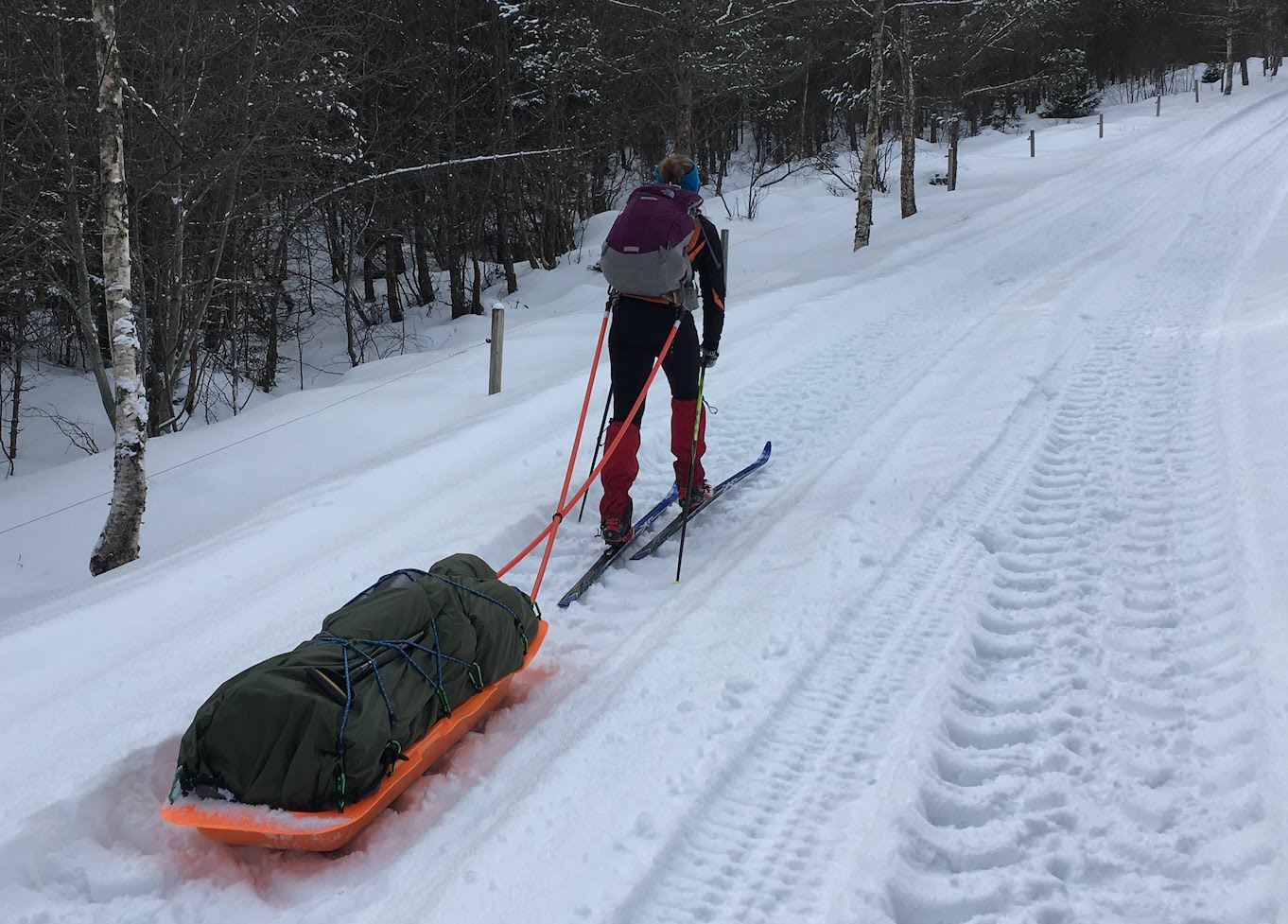
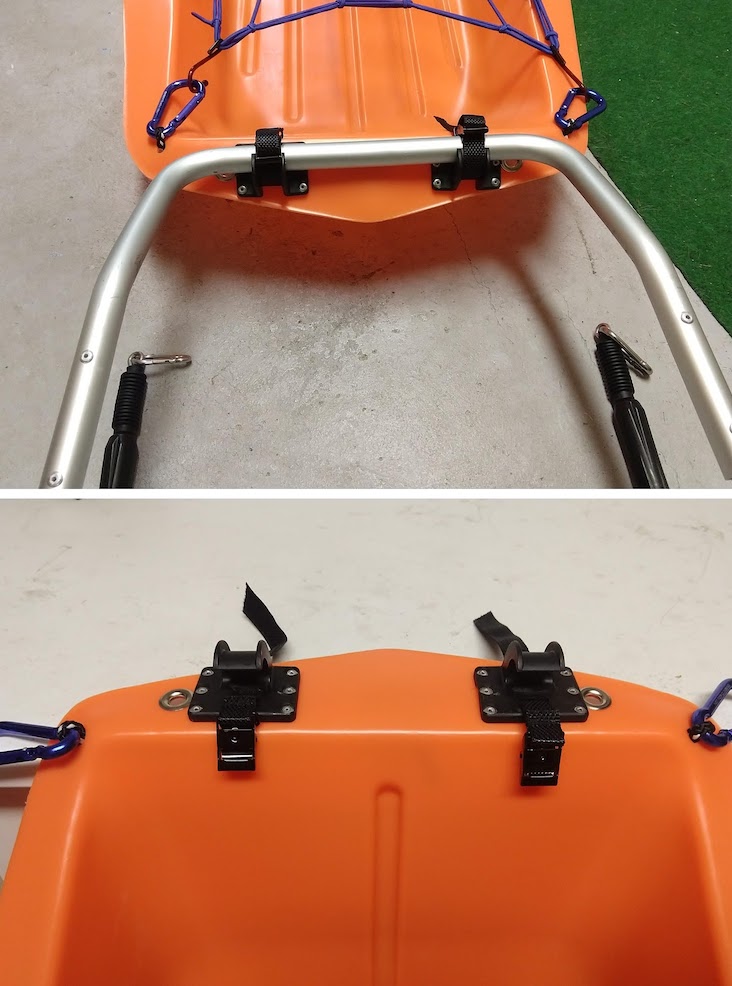
Attachment to backpack
Some people use a belt or harness for pulling a pulk, as it leaves your back free and thus reduces sweating (which is no good when it is really cold). However, I still prefer a backpack, so I can quickly stow away clothes, for example, without unpacking my pulk. Besides, I need to bring a pack along anyway for day trips from a base camp.
At first I used rope loops tied to the belt of my pack, but those were a bit fiddly when trying to tie in a carabiner with gloves on. Later I added metal rings, which improved matters. Currently I am using a pair of steel M6 triangular carabiners. This works fine, but they are a little too heavy duty for the task.
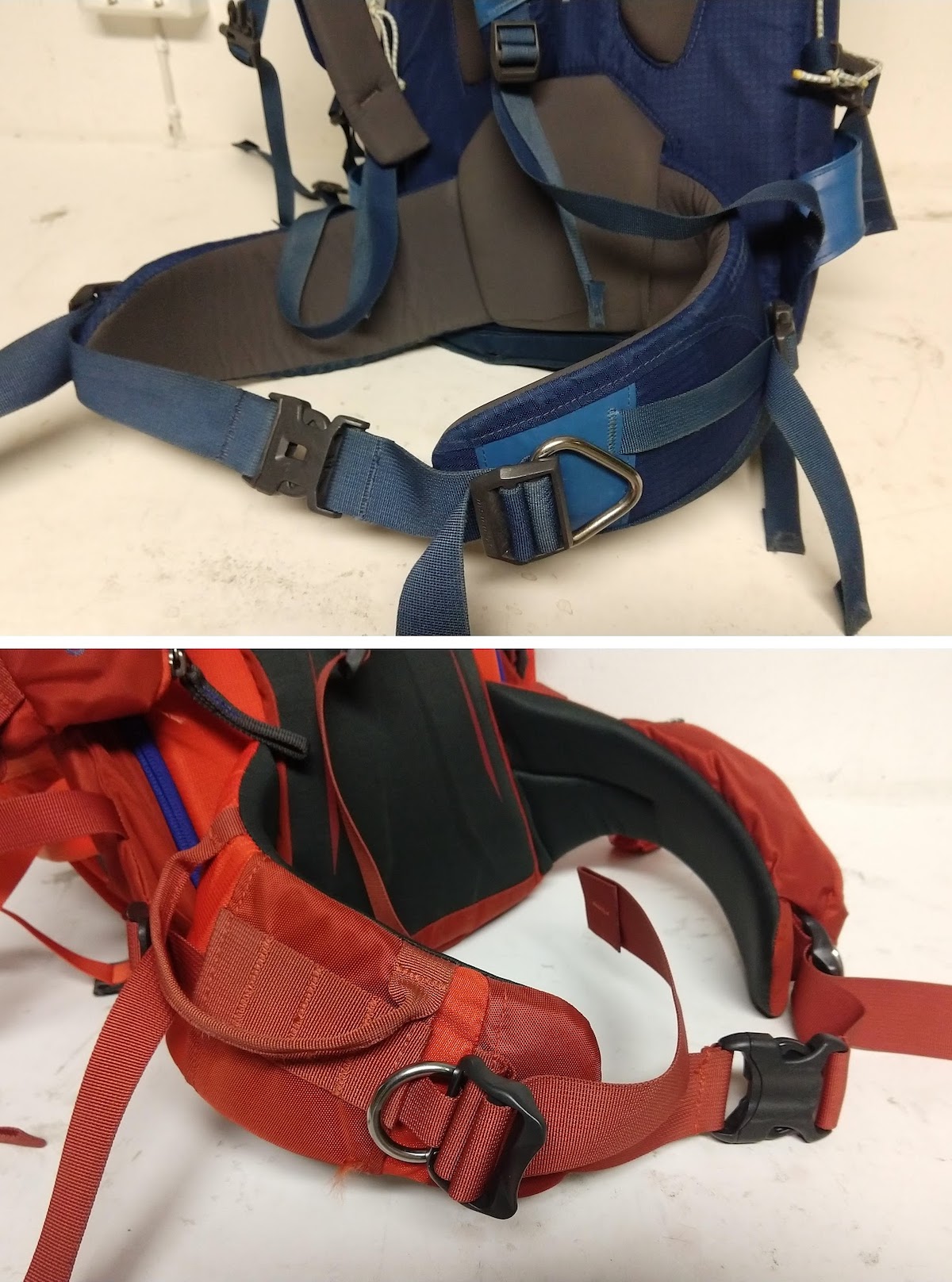
Fins for stability
Another issue with the Paris pulk – I guess with most pulks for that matter – is that it tends to slide sideways and downwards when traversing a slope. This is somewhat unnerving with a heavy load, because once it starts gaining momentum, it can pull you down the slope.
To counteract this unwanted tendency, I attached a pair of fins to the bottom of my pulk. This is nothing new and you can find many examples of it on the internet. Mine are made from an old pair of high-grade aluminum stakes, fitted to the bottom of the pulk by means of bolts and wing nuts. I originally made two sizes so I could switch them out depending on the conditions: large size for deep snow and small size for ice. Or take them off altogether in relatively flat terrain. However, I have only used the smaller ones so far and never felt the need to remove them or replace them with the larger ones. As the wing nuts on the inside of the pulk are somewhat annoying – I have to cover them with a piece of foam to prevent them for damaging the load – I am considering replacing them with smaller regular nuts.
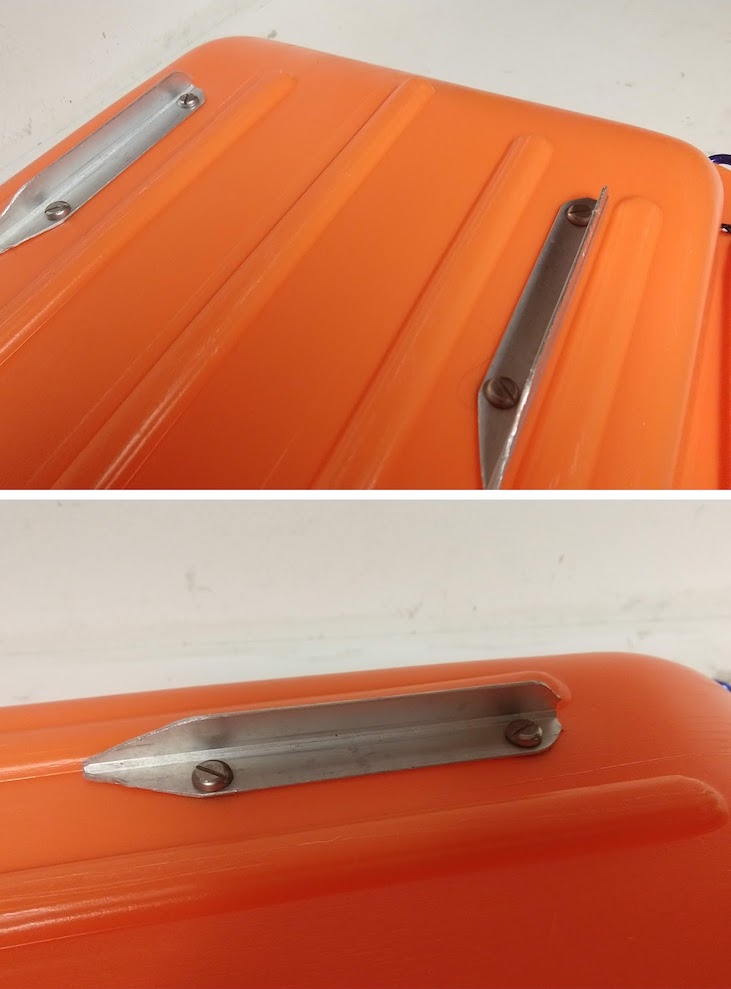
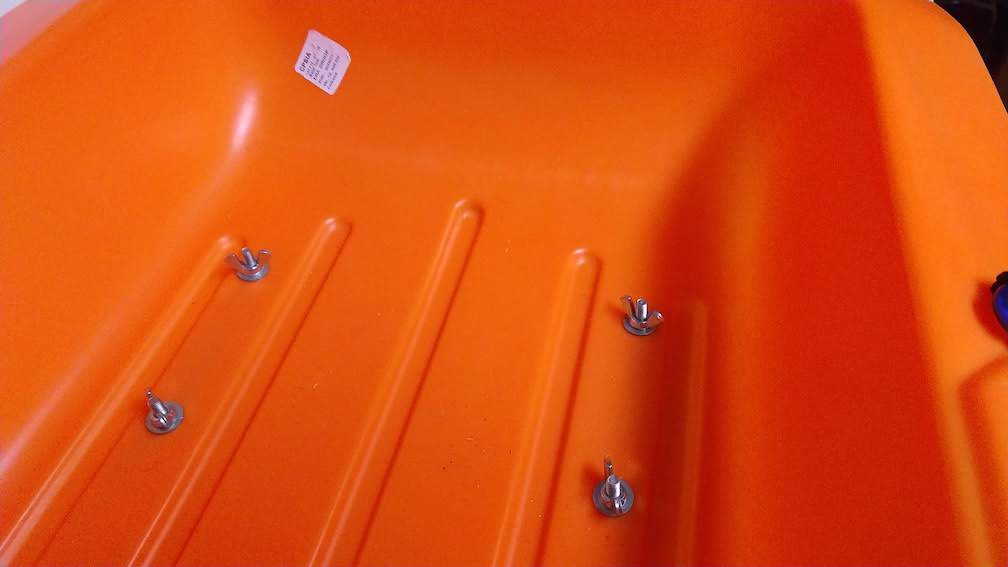
Securing the load
Following common practice, I tied a rope around the pulk with small loops protruding from the holes drilled along its sides. I fitted the loops with carabiners large enough to handle with gloves on. I then used a cheap plastic tarp to wrap all my gear in – taco-style – which I secured to the pulk with bungee cords. This functions well, but it is a hassle to pack and unpack if you need something quickly, especially when cold and windy conditions force you to use thick gloves. Also, when it is snowing, the tarp will collect snow during the time it takes to load and wrap it.
Later on I made a couple of pulk bags with zippers, which I will describe in another post soon. These make packing a lot faster and easier. In addition, it allows you to quickly dump the whole bag inside your tent during nasty weather.
The bags are secured to the pulk with a cargo net made of bungee cord. Originally designed for loads on ATVs and snowmobiles, it fits the pulk perfectly.
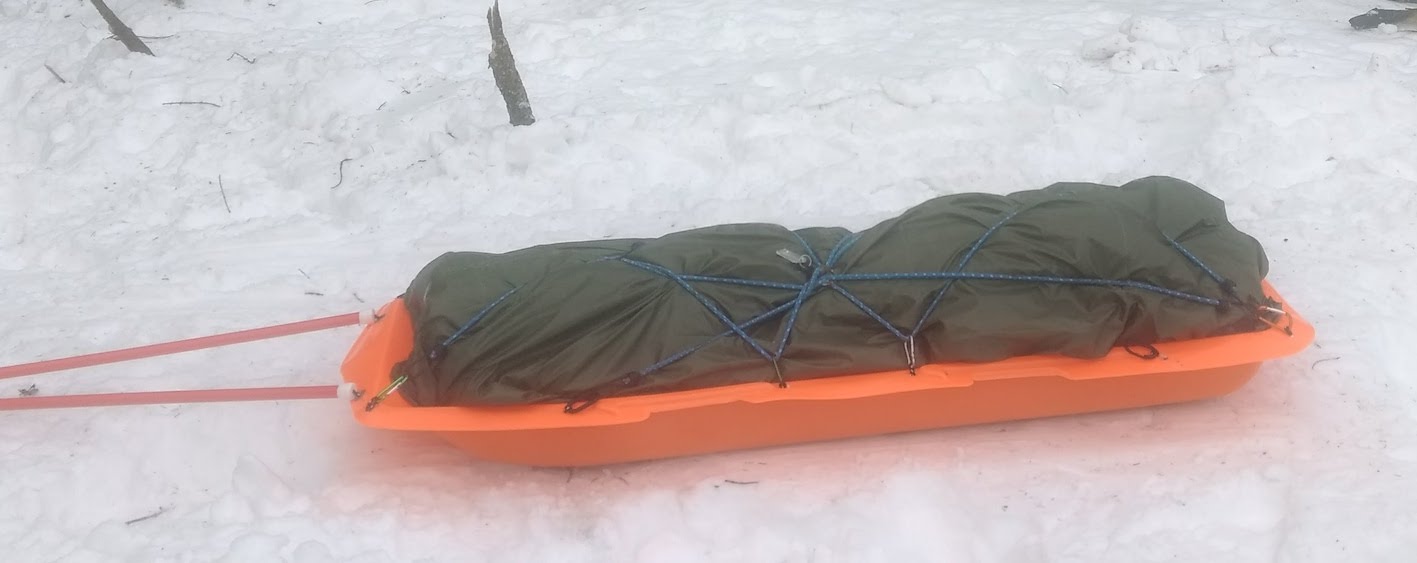

Remaining issues
When ploughing through deep soft snow, the pulk tends to collect snow, which increases its weight. Same thing when there is heavy snow fall and snow is piling up in the pulk. Under these circumstances, some sort of “snow skirt” fitting over the top of the pulk would be nice.
Another issue is that my pulk bags are not fully waterproof (neither are any of the commercially available ones, as far as I know), as normally the conditions will be cold and dry. However, any wet/melted snow or rain will pool in the pulk and eventually water will seep through the bags. Again, some sort waterproof “spray skirt”/”pack cover” may solve this.
